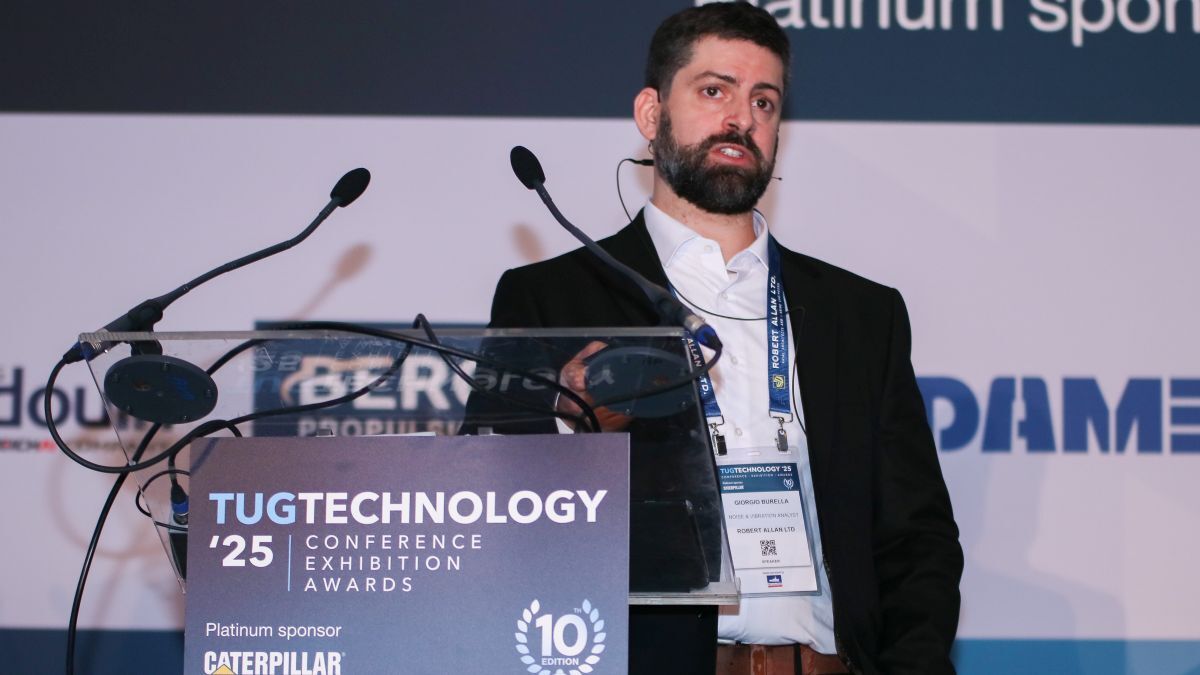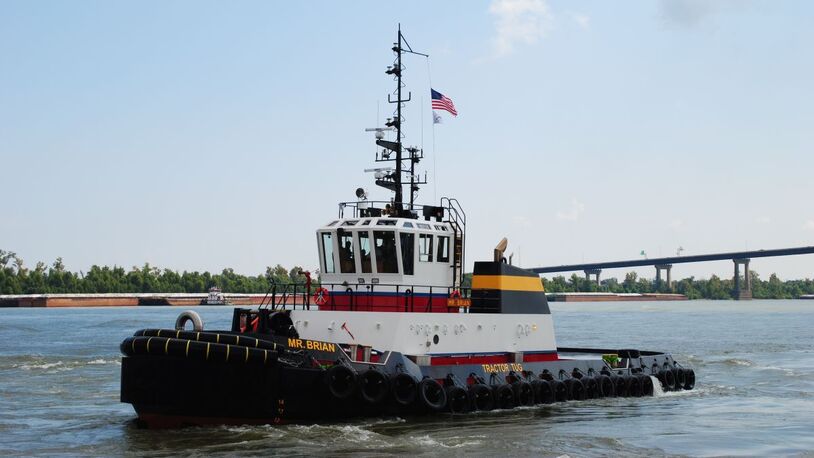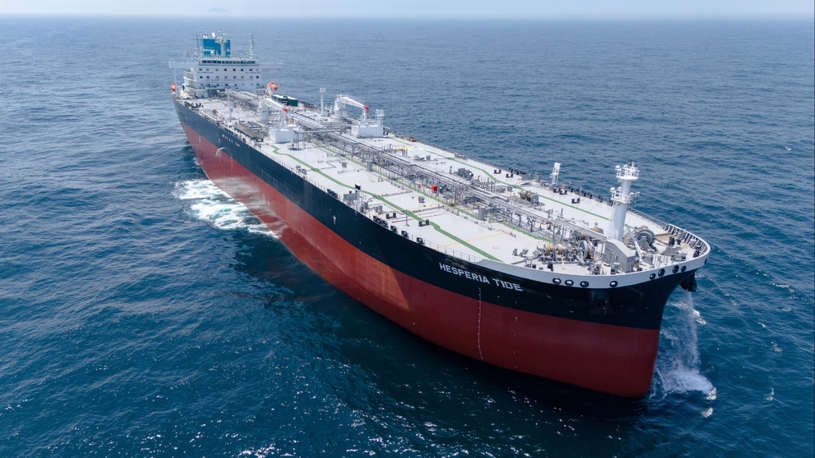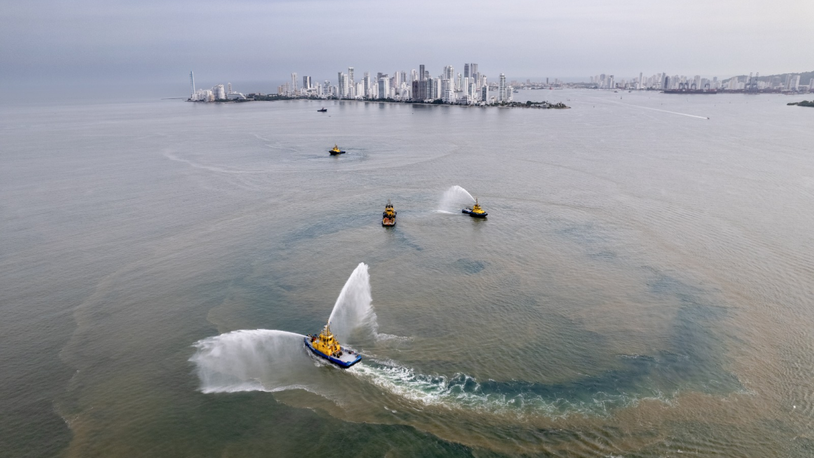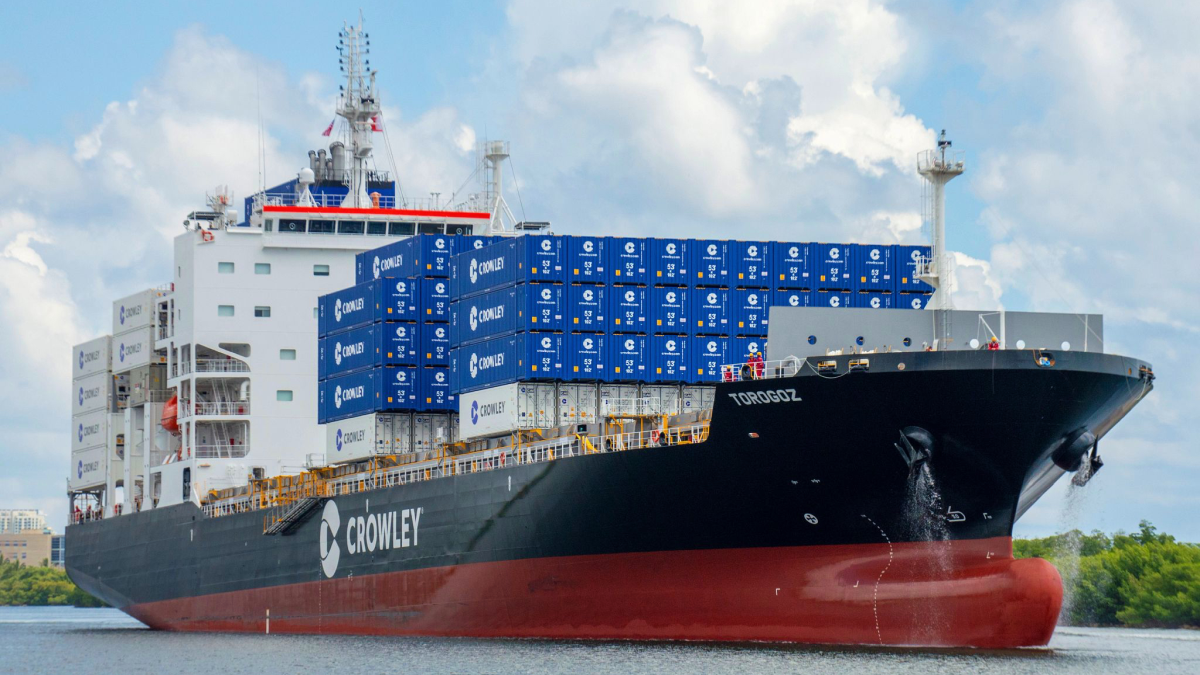Business Sectors
Events
Contents
Register to read more articles.
Battery-electric tugs emit lower URN in sensitive sea areas
Research has discovered ways to reduce underwater-radiated noise from tugs as this becomes a growing concern for ports and coastal communities
Tug designers are working to reduce underwater-radiated noise (URN) from tugboats operating in ports and coastal areas as this becomes increasingly important to regulators and national authorities.
Understanding URN from tugs and finding ways to reduce it, through design and operational adjustments, has become crucial to meeting the noise-reduction goals of port authorities and coastal communities.
Robert Allan Ltd has spearheaded research and development efforts to measure and characterise URN from modern azimuth stern drive (ASD) escort and harbour tugs. The Canadian naval architecture group used measurements from recent studies to develop the impact metrics of URN on cetaceans and to validate its new inhouse URN simulation tool, TugEM.
This is a predictive tool for underwater noise that can be used at the tug design stage to evaluate options for reducing URN to meet international standards. It will help shipyards and owners achieve URN reduction goals while understanding how tugs affect marine life.
Robert Allan’s research was supported by the Innovation Centre of Transport Canada through the Quiet Vessel Initiative and the Innovative Solutions Canada grant stream.
Key findings from these studies include that URN from tugs varies widely based on the type of ASD tug operations and their powertrains, says Robert Allan’s noise and vibration analyst, Giorgio Burella.
He says URN varies considerably during a working day as tugs undertake towage operations, transit between ship-handling jobs and remain on standby in case of emergencies.
“URN from transits and bollard pull increases as prime mover power increases,” he explains. “Machinery noise tends to dominate at low-power operations, such as low-speed transits, while propeller noise and cavitation tend to dominate high-power operations, for example during full-power bollard pull operations.”
For the research, URN measurements were taken in an inlet near Vancouver, British Columbia during a series of sea trials of ASD tugs in various operating states, including transits at different speeds and bollard pull operations.
The tugs tested were equipped with two different powertrains, one with diesel-mechanical propulsion and the other with battery-electric propulsion. URN measurements were used by a tug owner to obtain a quiet ship notation from classification society ABS for one of the vessels.
Results show that, during transits, the battery-electric tug was substantially quieter (by 10 dB) than the diesel-mechanical tugs, primarily due to the absence of diesel machinery noise on the electric-powered tug.
“The use of battery-electric propulsion can significantly decrease URN levels compared with conventional diesel-mechanical propulsion during transit,” says Mr Burella.
“However, during bollard pull operations, the noise levels for all tugs were comparable since noise levels are dominated by propeller cavitation rather than machinery noise.”
Impact on cetaceans
To assess the impact of URN on cetaceans, four metrics were developed specifically for the southern-resident killer whale (SKRW) population in British Columbia. These metrics evaluated the effects of URN on SKRWs’ ability for echolocation foraging, communication masking, behavioural changes, and the potential short and long-term consequences on the orcas’ hearing systems.
“Findings demonstrated how as URN levels decrease, the impact on SKRW also diminishes, with no significant threat to their hearing systems from tug noise,” says Mr Burella.
TugEM integrates with RAptures, Robert Allan’s inhouse tool used to compare alternative powertrains in terms of operational cost, capital expenditure and gaseous emissions, under user-defined operational profiles.
URN prediction models are based on semi-empirical and first-principle relationships to calculate noise across a variety of powertrain and reduction options. Predictions can be done early in the concept design phase, with inputs including operational profiles, propulsive equipment selection and noise source/transmission data.
TugEM is undergoing validation through further data collection and by using high-fidelity simulations from finite element, statistical-energy analysis for the machinery noise component, and computational fluid dynamics for the propeller noise component.
Riviera’s Maritime Hybrid, Electric & Hydrogen Fuel Cells Conference & Exhibition returns to Bergen on 14-16 October 2025! Use this link to get more information and tickets to this international event. Plus! We’re now accepting abstract submissions for papers! Please submit your ideas to Sue Woolley at sue.woolley@rivieramm.com. For any enquiries about this event, please contact Indrit Kruja or Rob Gore.
Sign up for Riviera’s series of technical and operational webinars and conferences:
- Register to attend by visiting our events page.
- Watch recordings from all of our webinars in the webinar library.
Related to this Story
Events
Offshore Support Journal Conference, Americas 2025
LNG Shipping & Terminals Conference 2025
Vessel Optimisation Webinar Week
© 2024 Riviera Maritime Media Ltd.


